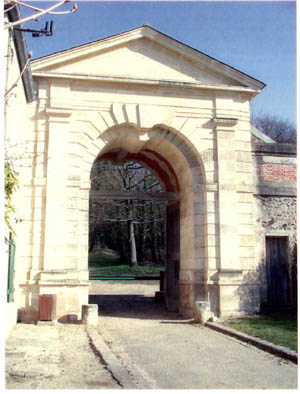The Gondi's Gate

Close counsellor to the Queen Mother, Catherine de Medicis, he will play a significant role in St Bartelemy massacre. He buys systematically all properties close to the royal residence of St Germain en Laye, and creates, around a modest castle in Noisy en Cruye, magnificent gardens and a grotto inspired from Italian Renaissance.
In 1592, Cardinal Pierre de Gondi (Albert's brother) will negotiate, with the help of the Papal Legate, a truce between Roman Catholic and Protestant parties, which will lead, the following year, to the abjuration of Henri de Navarre. Although king as Henri IV - since his cousin Henri III had been assassinated in 1689 - the Bearnais King had difficulties to fully submit the northern part of his kingdom, and especially the capital, Paris.
In 1607, during a plague epidemic in St-Germain, the king decides to send the young dauphin, later Louis XIII, and his sister to Noisy.
Between 1648 and 1652, an Albert's grandson, Jean-François Paul de Gondi, Cardinal de Retz who will become famous for his memoirs, plays an active role in La Fronde against the young King and his Prime Minister Mazarin. He will welcome in his Noisy residence famous rebels such as Prince de Conti and Duchesse de Longueville, brother and sister of Grand Condé, or congressmen such as Brousset.
In 1654, the castle is sold by the Gondis to François Bossuet, who will have to resell it after unfavourable financial transactions. At last Louis XIV himself will buy the property in 1675, which will be renamed as Noisy le Roi.
From 1684 to 1686, the castle will house what will become the Demoiselles de Saint-Cyr.
Later, the royal family will come for hunting, but the castle fall into decay due to lack of upkeep. The old king tries to offer it to one of his ministers, Mr de Chamillart, who will decline this too expensive gift.
In 1732, Louis XV will give it to Mr Leroy, Lieutenant of Hunting in Versailles, under the condition that he will pay for the destruction. Stones, and may be the frame, will be used to build a new castle.
From the wonderful Albert de Gondi's property, only one gate, two stone dogs and poor remnants of the horseshoe staircase leading to the second courtyard are left today.
_______________________________